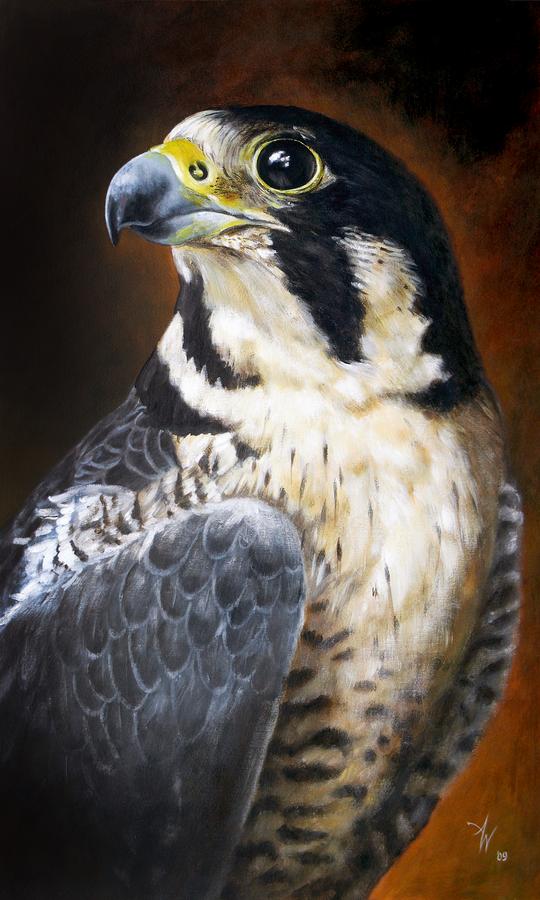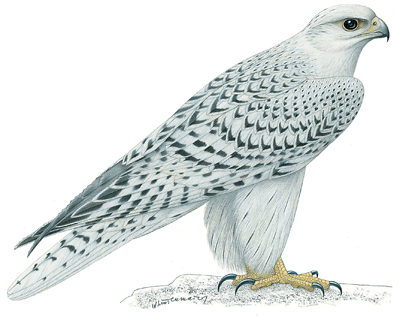
THE FALCON.
THE falcon is a bird of prey, and in olden times it was taught to help the hunters in catching their game. This was before guns and gunpowder were invented. The people of England and other countries of Europe used to think that hunting was the best sport they could have, and the rich men, nobles, and even kings, kept great numbers of dogs and falcons to help them. These birds were very carefully trained, and almost any fine morning you might have seen a company of hunters galloping away on their fine horses, with their dogs at their side, and their falcons sitting proudly on their wrists. And there the falcon would stay, never flying off, until at a word from his master he would dart away after a bird which they wished to take.
This strange hunter was of course trained to bring the game, which he caught to his master, instead of making a meal of it himself. A ring with the owner's name on it, was usually tied to one of the falcon's legs, and to this was fastened a string of tiny bells, so that if he was lost in the hunt, the master might easily find him.
The falcon is a very strong and courageous bird, and also a very intelligent one. He can be taught many curious tricks, and soon learns to obey a word and even a sign from his master. There are several kinds of these birds, some of which are found in almost every part of the world,, even in the cold regions of the north. The largest kind is about the size of the eagle, while some are not more than sixteen inches long. Their feathers are usually brown and white, though they are flecked and spotted in many different ways. Some are all of brown, with a few white spots; others are almost pure white, with perhaps a few flecks of brown.
The falcon in its wild state, usually builds its nest along the rocky shore of some bay. It is very shy, and its nest is not easily found; but Mr. Audubon, the great American naturalist, speaks of finding one on a rocky cleft by the sea. The nest itself was about two feet across, flat, and made of sticks, sea-weed, and mosses. The eggs, he says, were dull white, spotted with brown, looking very much like some of the birds themselves.
E. B.


Baby
